Part 1 | Part 2
There are few more wasteful and inappropriate federal activities than the seizing and destroying of indoor and outdoor cannabis plants. At the peak of Washington’s pointless war on drugs in 2010 the DEA funded the eradication of 11 million marijuana plants, and has caused 125 million of such “weeds” to be pulled and destroyed since 1990.
That’s right. While the taxpayers of Flyover America were being shackled with what is now $20 trillion of public debt, the boondogglers and busybodies of the Imperial City were chopping up harmless cannabis plants in pursuit of the very dumbest and most destructive “war” of the last 50 years.
>We here address the nation’s misbegotten war on drugs first launched by Tricky Dick Nixon in 1971 when he declared illicit drugs to be “America’s Public Enemy Number One.” Like all of Washington’s feckless external wars in the last 50 years it has accomplished nothing — even as it has left societal mayhem and massive fiscal waste and debt in its wake.
In fact, more than $1.5 trillion has been wasted at all levels of government on the war on drugs. Yet notwithstanding this enforcement dragnet, a vast network of brutal criminal enterprises has been spawned to distribute the artificially inflated contraband. So there has been virtually no change in the rate of drug use or drug addiction over all those decades.
In a survey taken since the 1970s, the percent of high-school seniors reporting illicit drug use in the past month has always varied between 25 and 30 percent. Likewise, the drug-use rate for the total population was 8 percent after 25 years of the war on drugs in 2002, but has slowly drifted higher to 9.5 percent in the last few years — notwithstanding record anti-drug spending and enforcement. And as shown by the blue line in the chart below, the U.S. drug-addiction rate has remained +/- 1.5 percent for four decades running.
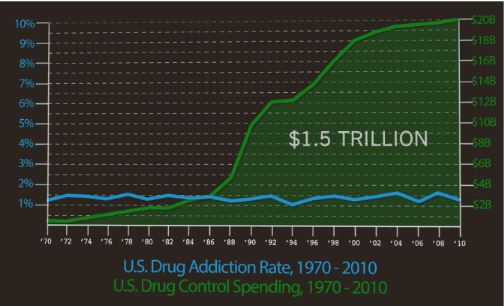
Our purpose here is not merely to lament the waste and injustice of this wrong-headed crusade. Nor is it to simply denounce the unspeakable violence which these black-market drug-distribution cartels inflict on American communities and those of originating and transit states, such as the Mexican border towns, alike.
The even larger point is that the failed war on drugs powerfully illustrates that the Washington swamp cannot be really drained until inappropriate functions of the state are eliminated root and branch.
Ending police meddling in citizens’ private decisions about their sedative, relaxant, or recreational intoxicant of choice is one of these opportunities. Surely American society functioned nicely, peacefully, and prosperously for 200 years before Nixon declared that the job of Washington is to protect citizens from their own personal consumption and health choices.
Early in the 20th century, for example, before the nanny state got up a head of steam, cannabis extracts were found on grocery store shelves, as pictured on the next page. The lack of DEA agents prowling the store aisles left the American public no worse for the choice.
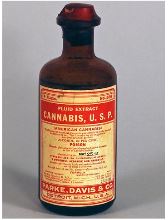
Since then the prison population has soared owing to the incarceration of people who formerly had the right to calm their nerves by picking up a bottle from Parke, Davis & Co. Likewise, that company’s present-day owner — Pfizer — is not known for distribution methods that include assassination or lesser forms of bodily violence for failed deliveries or late payments.
Indeed, what had been a branded, store-bought product like Mrs. Winslow’s Soothing Syrup (cocaine-based) has been consigned to black-market distribution channels that vastly inflate costs, eliminate brand-based quality control, and replace warehouse workers, route drivers, and retail clerks with armed thugs and violent drug king-pins.
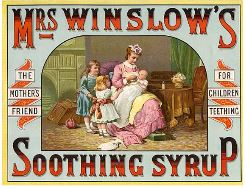
Even more importantly, Washington’s nanny-state campaign against drugs not merely took “the mother’s friend” and like products off the shelf, but in doing so it has bloated the criminal justice system enormously. That is, it not only added to fiscal costs, but also dramatically increased the opportunities for police abuse and violence against the citizenry.
For example, since 1971 the rate of police arrests for non–drug-related crimes, as tracked by the FBI’s Uniform Crime Reports (UCR), has declined sharply. In 1973, there were 8.7 million such arrests, representing 5.9 percent of the U.S. population over 16.
By contrast, in 2015 non–drug- related arrests had barely risen to 9.3 million, but the population over 16 years had grown from 146 million to 250 million. Accordingly, the non–drug arrest rate had dropped to 3.7 percent of the adult population.
But this welcome improvement was more than nullified by the drug-enforcement dragnet. Whereas drug arrests at all levels of law enforcement amounted to 300,000 in 1973, in the most recent year (2015) that figure had soared to 1.5 million or 5X more. Moreover, fully 84 percent of those arrests were for possession, not manufacturing or distribution, of the proscribed substances.
Needless to say, an explosion of drug arrests has translated into a vast swelling of the prison population. As indicated in the chart, there were 41,000 persons in prisons or jails for drug-related offenses in 1973 compared to 501,500 at present. Self-evidently, however, a 12X increase in incarceration has had no impact on drug-use rates whatsoever.
Worse still, the political demagoguery that has been institutionalized by the war on drugs has been a primary force behind the passage of “tough on crime” laws like minimum sentences and three-strikes and life. Consequently, the total jail and prison population in the U.S. has soared from 400,000 in 1973 to 2.3 million at present.
As such, the latter figure represents 25 percent of the world’s non–military-prison population in a nation which contains less than 5 percent of the world’s population. Thus, the U.S. incarceration rate of 750 per 100,000 population compares to a rate of 120 per 100,000 in Canada, and 100 and 75 in Europe and Japan, respectively.
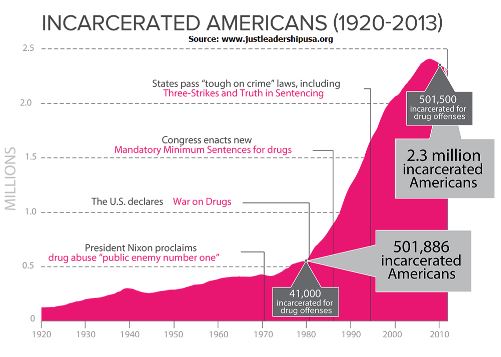
In fact, the war on drugs and the drastically rising U.S. incarceration rate have been coterminous. Once Washington started down the slippery slope of banning illicit drugs and carrying out a related campaign for “law and order,” it became infectious throughout the federal system. And the latter was in large part due to federal funding which now totals more than $30 billion per year, and which funds militarization of local police forces and a “lock them up” approach to social control.
In fact, other than perhaps issues of national security and treason, there is no reason for the federal government to be in the law-enforcement business at all. The DEA, FBI, U.S. Marshals Service, the federal court system and Bureau of Prisons now cost more than $20 billion per year, but the overwhelming share of those expenses is owing to enforcement of drugs, gambling, prostitution, and so-called white-collar crimes, which should not be crimes at all; or for purposes of protecting public order, life, and property that are fully within the competence and Tenth Amendment purview of state and local units of government.
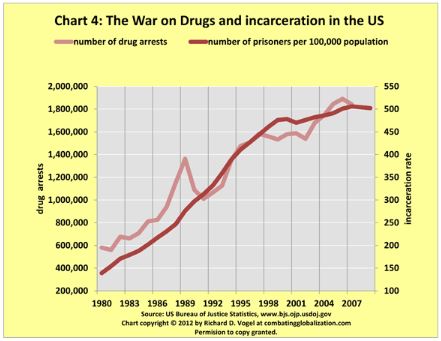
The federal government clearly leads the way. Currently the federal prison system houses 211,000 inmates of which 105,000 or 50 percent are subject to Uncle Sam’s hospitality owing to drug-related charges.
Needless to say, when it comes to the proliferation of nanny-state ordinances, the demand for prison bunks has escalated in lock-step with the resources pumped into enforcement. For instance, during the first year of Nixon’s drug war there were 1,500 DEA agents (mostly recruited from the FBI and other law-enforcement agencies) and the agency’s annual budget totaled just $65 million.
Today, the DEA employs 5,250 agents, 11,000 total staff, and sports an annual budget of $3 billion. The whole DEA budget, however, is one giant waste of taxpayer money and a fountain of more crime, not less, as we will detail in part 2.
This article is reprinted with permission. It was originally published in the June 2018 issue of Future of Freedom.



